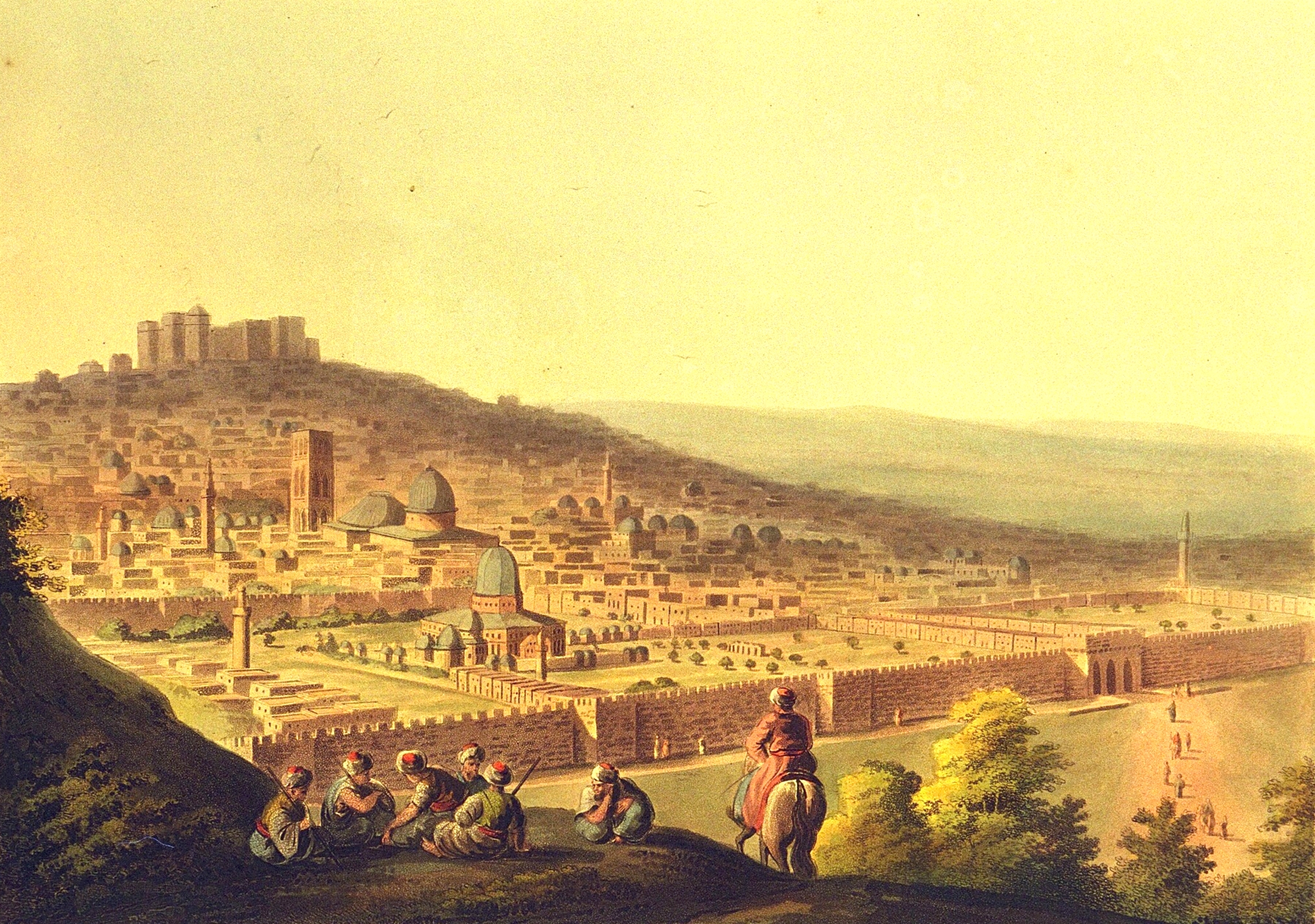Palestine in the Eighteenth and Nineteenth Centuries
Lesson Plan Cluster Production Details
Undisciplining the Victorian Classroom Editorial Team Statement on Palestine
The Editorial Team of Undisciplining the Victorian Classroom acknowledges that this set of lesson plans on Palestine in the eighteenth and nineteenth centuries is being published at a critical time. In development for many months, we could not have anticipated that these materials would be released as bombs fall on Gaza and as the numbers of Palestinian deaths grow at horrific rates.
In publishing these materials, we stand in solidarity with Palestinians, as part of our larger dedication to opposing settler colonialism and genocide everywhere and to grappling with our complicity in those systems and structures. We see no contradiction in taking this position alongside our opposition to anti-semitism, white supremacy, racism, and all other forms of oppression and violence.
The materials in this set of lesson plans show the deep importance of understanding Palestine and the current bombardment within a longer historical view. Indeed, Israel’s present attacks on Gaza is not only the most current manifestation of its settler colonial project, but it is also intertwined with the multiple imperialisms that have shaped the region, especially those enacted by Britain.
This unit centers the Palestinian histories and perspectives that are so often erased in discussions about the region and offers constructive ways to bring this crucial context into our classrooms. Disrupting this erasure is especially important since Palestinians and descendants of Palestinian immigrants are often in the far minority at our institutions, which can further anonymize these communities.
This unit thus offers our field and the public at-large a concrete pedagogical opening for Palestinian students and teachers to articulate their experiences and histories to a wider world and for non-Palestinian students and teachers to engage with and learn about Palestine in the classroom from those who are directly experiencing the consequences of a crisis that crystallized, in part, during the eighteenth and nineteenth centuries.
Pearl Chaozon Bauer, Ava Bindas, Kristen Layne Figgins, Jude Fogarty, Ryan D. Fong, Sophia Hsu, Cherrie Kwok, M.A. Miller
Introduction
This cluster provides introductory materials and lesson plans about Filasṭīn / Palestine in a nineteenth-century context, prior to its colonialism by Britain after World War I and the 1948 Nakba in which the state of Israel was founded through the displacement of 750,000 Palestinians from their homes.
Our lesson plans aim to show the extent to which Palestine, with all its historical and religious associations in the Western and Christian mind, played an important role in shaping the literary and intellectual landscape in nineteenth-century Britain.
These lesson plans also provide historical context for the present-day struggles of faculty teaching in Palestinian universities in order to assist teachers outside of Palestine in better understanding the significance of different representations of Filasṭīn / Palestine in the nineteenth century, and equip them with tools for teaching students about a place and a people that has been consistently erased from what Stuart Hall would call our collective cognitive maps.
In addition to deconstructing our inherited discourse about how and where knowledge production takes place, this cluster aims to show how thinking with, and about, Palestine helps to engender new critical perspectives and raises new questions that complicate the conventional boundaries of Romantic and Victorian era studies.
Indeed, one important contribution of our cluster to the productive discussion among literary scholars at the moment is that viewing Palestine as a relational place could help us to rethink our scholarly priorities from multilocational perspectives, an idea that has recently been discussed in “Victorians in Location,” a recent special journal issue in Victorian Literature and Culture.
Our lesson plans range in structure. Two are traditional lesson plans that frame suggested readings and provide discussion questions. Two others are experimental, mixing interviews and reflection that teachers and students can use to consider the ongoing nature of settler colonialism in Palestine in the context of English language and literature classrooms.
Given the immense material available to teach in both Romantic and Victorian literary classrooms, this cluster is a work-in-progress. Future lessons plans will include units on Palestinian representations of Filasṭīn / Palestine, anti-colonial pedagogical practices based on interviews with Palestinian university faculty, and more.
Our materials have been designed collectively through more than two years of conversations, frustrations, dead-ends, regroupings, and, finally, dedication. Those involved in producing them include tenure-track and non-tenure track faculty, graduate students, and independent researchers in nonprofit positions. We are located across the United States and the United Kingdom; some of us are white and some are Palestinian; all of us have relationships and histories that made Palestine an important focal point of anticolonial and transnational solidarity work.
We understand anti-Zionist work to be intersectional with other transnational anti-racist and anti-fascist movements, especially with anti-racist and anti-fascist Jewish organizations such as Jewish Voice for Peace, International Jewish Anti-Zionist Network, B'Tselem, Independent Jewish Voices Canada, and Jews for Economic and Racial Justice.
We are immensely grateful to Undisciplining the Victorian Classroom for providing a platform that supports anticolonial pedagogical work that is responsive to the present as much as it is concerned with the past.
Works Cited
Institute for Palestine Studies. The Palestinian Nakba: What Happened in 1948 and Why It Still Matters. Washington D.C., May, 2021.
Banerjee, Sukanya. “Victorians in Location: Introduction.” Victorian Literature and Culture, vol. 51, no. 1, Mar. 2023, pp. 91-94.
Hall, Stuart. “Representation, Meaning and Language.” Representations, edited by Stuart Hall et al., Second edition, The Open University, 2013, pp. 1-15.
Tile/Header Image Caption
Mayer, Luigi. Views in Palestine. Drawing, 2 Jan. 1804. R. Boyer Historic Gallery, Pall Mall, London. Public domain.
Page Citation (MLA)
Sarah Copsey Alsader, Lenora Hanson, Mohammad Sakhnini, devs. “Palestine in the Eighteenth and Nineteenth Centuries: Introduction.” Ryan D. Fong , les. plan clust. dev.; Cherrie Kwok , les. plan guide. Undisciplining the Victorian Classroom, 2023, https://undiscipliningvc.org/html/lesson_plans/palestine_eighteenth_nineteenth_introduction.html.
